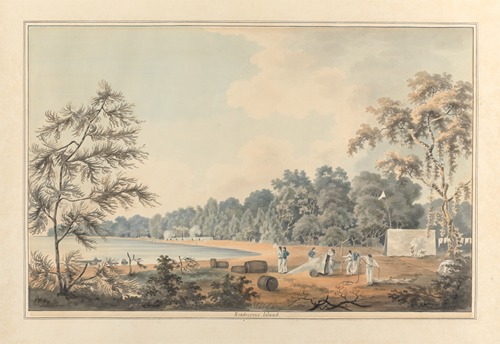
Lt. James George
James George was born in Lewisham in 1782, the son of the Rev. James Payne George. He was appointed a Cadet on the Bengal military establishment of the East India Company in 1789 and arrived in India on the ship 'Charlton' in October 1799. He was posted to the 7th Regiment of Bengal Native Infantry and promoted to Lieutenant in 1800. In 1804 he transferred to the newly raised 25th Regiment of Bengal Native Infantry and took part in the capture of Gohad in 1806. He travelled extensively in northern and central India and may have known Chinnery and his uncle in Calcutta. In 1811 he was chosen to serve as a Supernumery Aide-de-camp to the Governor-General, Lord Minto, on the British Expedition to capture Java from the Dutch.
George made sketches of the waterfall at Penang when the invasion fleet called there briefly, but none of his drawings of Penang have survived. He also made sketches of Malacca when the Governor-General and his entourage stopped there in May 1811. Five large watercolour drawings of Malacca which he later worked up were formerly in the possession of the Raffles Museum, Singapore, but these have since been lost, and all that remains of George's drawings of Malacca is a very small watercolour drawing in his album of drawings, lettered 'Indian Scenery', in the Victoria and Albert Museum, London, and a large watercolour measuring 21 x 14 inches in a private collection.
George returned to India in 1812 when he was promoted to the rank of Captain and for the next eleven years he was Commandant of the Chittagong Provincial Battalion in East Bengal. It was here that he painted 33 small watercolours which, with the exception of three or four which have been removed, make up the album 'Indian Scenery' in the Victoria and Albert Museum. Apart from this album of small watercolours all that remains of George's work are two large watercolours of Chittagong in the India Office Library. The present watercolours are therefore very rare examples of George's work.
George was promoted to the rank of Major in 1822 and to Lieutenant-Colonel in 1824 when he transferred to the 57th Regiment of the Bengal Native Infantry. He died at Shahjahanpur in 1828, aged forty-six
